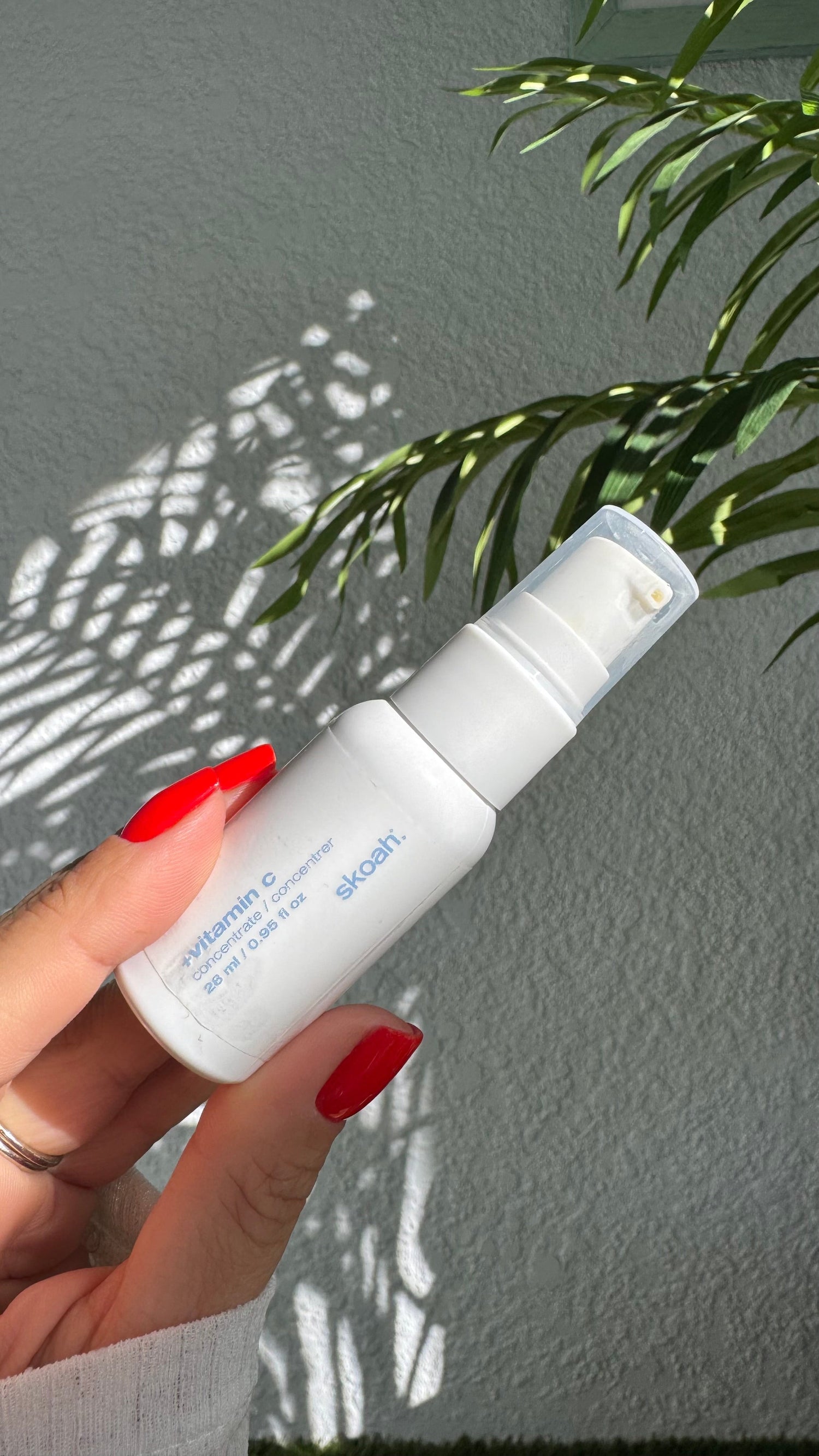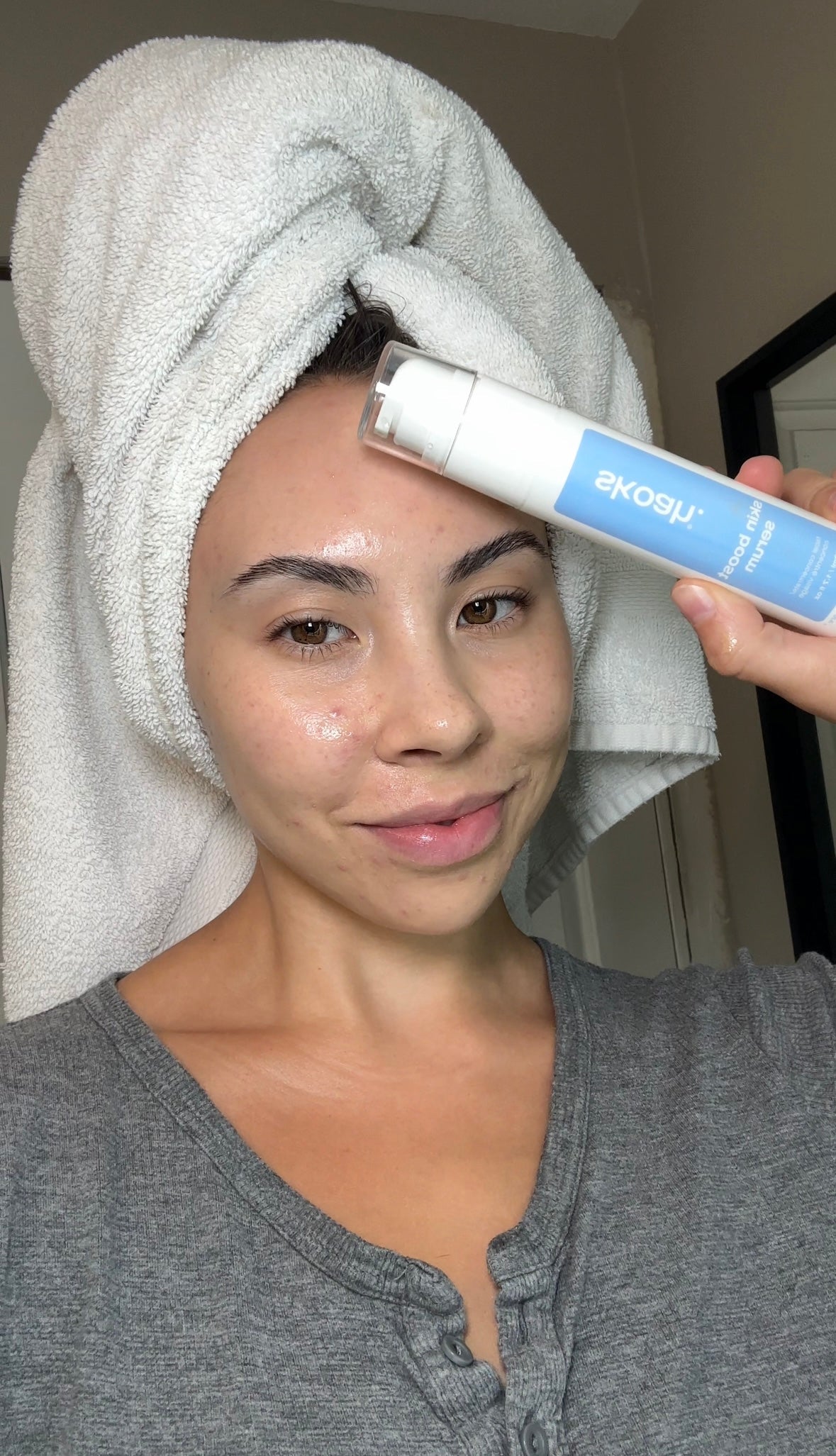Retinol and Vitamin C: Power Duo or Too Much for Skin?
Retinol and vitamin C are two of the most celebrated ingredients in skincare. Both are known for their ability to brighten, smooth, and firm the skin, but many people are unsure how—or if—they can be used together.
The good news? When used correctly, retinol and vitamin C can work in harmony, helping to reduce signs of aging, fade dark spots, and improve overall skin tone and texture. The key is understanding when and how to apply them.
Benefits of Vitamin C and Retinol
Vitamin C
-
Brightens dull skin
-
Fades hyperpigmentation and dark spots
-
Protects against free radical damage
-
Boosts collagen production
Retinol
-
Increases cell turnover
-
Reduces the appearance of fine lines and wrinkles
-
Clears and refines pores
-
Smooths texture and boosts radiance
These ingredients are incredibly effective on their own, but can complement each other when used thoughtfully.
How to Use Vitamin C and Retinol in the Same Routine
☀️ Use Vitamin C in the Morning
Vitamin C is best used during the day when its antioxidant properties can help protect your skin from UV rays, pollution, and free radical damage.
💡 Pro Tip:
-
Apply a vitamin C serum after cleansing and before moisturizer.
-
Layer with a hydrating serum (like hyaluronic acid) and always follow with SPF 30 or higher.
-
Vitamin C boosts the effectiveness of sunscreen when used together!
🌙 Use Retinol at Night
Retinol is sensitive to sunlight and can degrade when exposed to UV, so it’s best applied only at night.
💡 Pro Tip:
-
Start by using retinol 2–3 nights per week, gradually increasing as your skin builds tolerance.
-
Always follow with a gentle moisturizer or barrier-repair cream to minimize dryness or irritation.
-
Avoid other active ingredients (like AHAs, BHAs, or vitamin C) on the same night if you’re new to retinol.
Can You Use Retinol and Vitamin C Together?
Yes, but only if your skin tolerates it well. Both ingredients are active and can cause sensitivity when layered, especially if you’re just starting out.
💡 Best Practice:
-
Use Vitamin C in the morning
-
Use Retinol at night
If you're an experienced skincare user and your skin is not sensitive, you can layer them with caution. Always buffer with hydrating serums and a gentle moisturizer to reduce irritation.
Tips to Avoid Irritation
🔁 Alternate Days:
If your skin is sensitive, try using vitamin C one day and retinol the next rather than layering them in the same 24-hour period.
💧 Layer with Hydrating Products:
Use a hydrating serum (like hyaluronic acid or glycerin) between your actives and moisturizer to support your skin barrier.
🧴 Moisturize Generously:
Lock in moisture with a barrier-supporting cream to reduce dryness, flaking, and redness.
🧴 Always Use SPF (Even in Winter):
Retinol makes your skin more sensitive to sunlight. SPF 30 or higher is essential daily—no exceptions.
🚫 Avoid Harsh Cleansers or Scrubs:
When using powerful actives like retinol and vitamin C, stick to gentle, non-stripping cleansers and skip physical exfoliants.
Beginner-Friendly Routine Example
Morning:
-
Cleanser
-
Vitamin C Serum
-
Hydrating Serum (e.g., hyaluronic acid)
-
Moisturizer
-
SPF 30+
Evening (2–3 times a week):
-
Cleanser
-
Retinol Serum
-
Hydrating Serum
-
Moisturizer
Evening (on non-retinol nights):
-
Cleanser
-
Hydrating or Brightening Serum (e.g., peptides or niacinamide)
-
Moisturizer
FAQs: Retinol and Vitamin C in Skincare
1. Can I use vitamin C and retinol on the same day?
Yes—but apply vitamin C in the morning and retinol at night to avoid irritation and maximize results.
2. Should I use a moisturizer after retinol and vitamin C?
Absolutely. A moisturizer helps seal in hydration and supports the skin barrier, especially when using strong actives.
3. What if my skin becomes irritated?
Cut back on retinol use to once or twice a week, focus on barrier repair, and avoid layering actives. Use calming ingredients like ceramides, niacinamide, or oat extract.
4. Can I use hyaluronic acid with retinol and vitamin C?
Yes! Hyaluronic acid is a hydrating hero that plays well with both and helps reduce dryness or sensitivity.
5. When will I see results?
With consistent use, most people start seeing visible results in 4–8 weeks, but benefits improve over time with continued use.
A Smart Approach to Active Ingredients
Both vitamin C and retinol are powerful tools in any skincare routine—but success lies in how you use them. By applying vitamin C in the morning and retinol at night, layering with hydrating serums, and protecting your skin with SPF, you can unlock glowing, smooth, and healthy-looking skin—without irritation.
✨ Looking for beginner-friendly actives? Choose gentle, effective formulas that are balanced with hydration and designed for all skin types.



